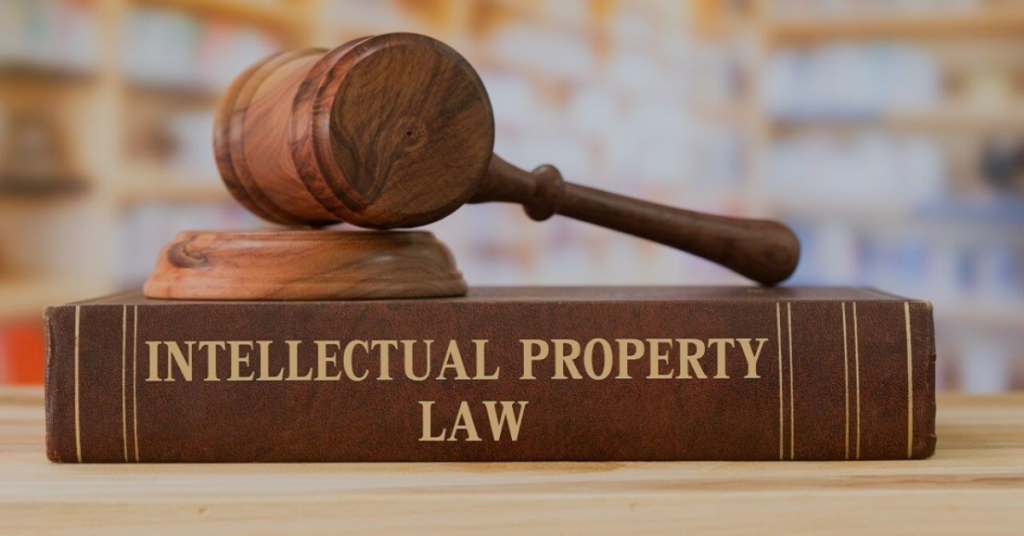Partition Suits in Chandigarh: A Step-by-Step Guide for Litigants
Partition suits are legal proceedings filed to divide jointly owned property among its co-owners. In Chandigarh, a planned city with a high percentage of jointly owned properties, understanding the intricacies of partition suits is crucial for individuals seeking to separate their shares. This step-by-step guide provides a comprehensive overview of the process, legal framework, and key considerations for litigants in Chandigarh.
Understanding the Legal Basis for Partition
The right to partition stems from the concept of co-ownership. When two or more individuals jointly own a property, each has an undivided interest in the whole. Partition allows each co-owner to convert their undivided interest into a separate, defined share. The primary laws governing partition suits in Chandigarh are:
- The Partition Act, 1893: This central legislation provides the framework for partition suits, including the process for dividing the property and selling it if division is not feasible.
- The Code of Civil Procedure, 1908 (CPC): The CPC lays down the procedural rules for filing and conducting civil suits, including partition suits.
- Hindu Succession Act, 1956 (as amended): This act governs the inheritance and succession of property among Hindus, Buddhists, Jains, and Sikhs. It plays a significant role in determining the rights and shares of co-owners, particularly in cases of ancestral property.
- Transfer of Property Act, 1882: This Act governs the general principles of transfer of property, including sale, mortgage, and lease, which can be relevant in partition suits.
Step 1: Identifying the Co-Owners and Their Shares
The first and most crucial step is to identify all co-owners of the property and accurately determine their respective shares. This requires a thorough examination of the property documents, including:
- Sale Deed: This document outlines the names of the purchasers and their ownership percentages (if specified).
- Gift Deed: If the property was received as a gift, the deed will specify the donees and their shares.
- Will: If the property was inherited through a will, the will determines the beneficiaries and their respective shares.
- Mutation Records: Records maintained by the Chandigarh Administration documenting changes in ownership.
- Succession Certificate/Letters of Administration: Required when the property owner dies intestate (without a will) to establish the legal heirs.
Determining the shares can be complex, especially in cases of ancestral property governed by the Hindu Succession Act. The Act specifies different rules for inheritance depending on the gender of the deceased and the existence of other legal heirs. Legal advice is highly recommended to ascertain the correct shares of each co-owner.
Step 2: Attempting an Amicable Partition
Before resorting to legal action, it is advisable to attempt an amicable partition through mutual agreement. This can save time, money, and the strain of litigation. Methods for attempting an amicable partition include:
- Negotiation: Direct discussions between co-owners to reach a consensus on how to divide the property.
- Mediation: Engaging a neutral third party (mediator) to facilitate negotiations and help the co-owners reach a mutually acceptable agreement. The Chandigarh Mediation Centre provides such services.
- Family Settlement Agreement: Formalizing the agreed-upon partition terms in a written agreement, signed by all co-owners and properly attested.
A registered Family Settlement Agreement is legally binding and can prevent future disputes. It's crucial to involve a lawyer to draft and review the agreement to ensure it accurately reflects the terms of the partition and complies with legal requirements.
Step 3: Filing the Partition Suit
If amicable partition fails, the next step is to file a partition suit in the appropriate court in Chandigarh. Generally, partition suits are filed in the court of the Civil Judge (Senior Division). The key elements of a partition suit include:
- Plaint: The plaint is the formal written statement outlining the plaintiff's (the person filing the suit) claim. It must include:
- Names and addresses of all plaintiffs and defendants (co-owners).
- Description of the property sought to be partitioned (including its location, boundaries, and area).
- Details of the co-ownership, including how the property was acquired and the respective shares of each co-owner.
- Reasons for seeking partition (e.g., disagreement among co-owners, desire to independently manage one's share).
- Prayer for partition (the specific relief sought from the court, i.e., a decree for partition).
- Valuation of the property for the purpose of court fees. This is crucial as court fees are calculated based on the property's value.
- Supporting Documents: The plaint must be accompanied by relevant documents, such as:
- Copy of the sale deed or other title document.
- Mutation records.
- Family tree (if applicable, in cases of ancestral property).
- Any previous agreements or correspondence regarding the partition.
- Court Fees: Court fees must be paid at the time of filing the suit. The amount depends on the valuation of the property.
It is highly recommended to engage a lawyer experienced in property law and partition suits to draft the plaint and ensure all necessary documents are included. A well-drafted plaint significantly increases the chances of a favorable outcome.
Step 4: Serving Summons to the Defendants
Once the plaint is filed, the court will issue summons to the defendants, notifying them of the suit and requiring them to appear in court and file their written statement (defense). The summons must be served on the defendants in accordance with the rules of the CPC. This can be done through:
- Personal Service: Direct delivery of the summons to the defendant.
- Registered Post: Sending the summons by registered post with acknowledgment due.
- Substituted Service: If personal service is not possible, the court may order substituted service by affixing the summons to a conspicuous place on the defendant's property or by publishing it in a newspaper.
If a defendant fails to appear despite proper service of summons, the court may proceed ex parte (without the defendant's participation).
Step 5: Filing of Written Statement by the Defendants
The defendants must file a written statement within the time period specified by the court. The written statement is their response to the plaintiff's claims in the plaint. It should:
- Admit or deny the allegations made in the plaint.
- State the defendant's version of the facts.
- Raise any legal defenses or objections to the partition suit.
The defendant may also file a counter-claim, seeking affirmative relief from the court. For instance, a defendant may argue that their share in the property is larger than what is claimed by the plaintiff.
Step 6: Framing of Issues
After the pleadings (plaint and written statements) are complete, the court will frame the issues. Issues are the points of contention between the parties that the court must decide. For example, issues may include:
- Whether the parties are co-owners of the property.
- What are the respective shares of each co-owner?
- Whether the property is capable of being partitioned by metes and bounds (physical division).
- Whether the sale of the property is necessary.
The issues framed by the court will guide the subsequent proceedings, including the evidence to be presented and the arguments to be made.
Step 7: Evidence and Arguments
After the issues are framed, the parties must present their evidence to support their respective claims. Evidence can include:
- Documentary Evidence: Documents such as sale deeds, mutation records, wills, and family trees.
- Oral Evidence: Testimony of witnesses, including the parties themselves and any other individuals who have relevant knowledge of the facts.
The parties have the right to cross-examine each other's witnesses. After the evidence is presented, the parties will present their arguments to the court, arguing why their version of the facts should be accepted and why they are entitled to the relief they seek.
Step 8: Preliminary Decree
If the court finds that the plaintiff is entitled to partition, it will pass a preliminary decree. The preliminary decree declares the rights and shares of each co-owner in the property. It also directs the court to appoint a commissioner to physically divide the property, if possible, according to the shares determined in the decree.
Step 9: Appointment of Commissioner
The court-appointed commissioner is responsible for:
- Visiting the property.
- Assessing its physical characteristics and feasibility of partition.
- Preparing a plan for dividing the property into separate shares, ensuring that each share is proportionate to the co-owner's entitlement.
- Submitting a report to the court outlining the proposed partition plan.
The commissioner's report is crucial in determining the final outcome of the partition suit.
Step 10: Final Decree
After considering the commissioner's report and any objections raised by the parties, the court will pass a final decree. The final decree specifies the exact boundaries of each co-owner's separate share. It effectively converts the undivided interests of the co-owners into separate, defined ownership.
Step 11: Execution of the Decree
The final step is the execution of the decree. This involves physically separating the shares as per the final decree and handing over possession to the respective co-owners. If any party refuses to comply with the decree, the court can take steps to enforce it, such as appointing a bailiff to physically evict the non-compliant party.
Sale by Way of Auction in Chandigarh
If the property is not capable of being physically divided without significantly diminishing its value, the court may order the sale of the property by way of auction. This is governed by Section 2 of the Partition Act, 1893.
Conditions for Sale:
- The court must be satisfied that a physical partition cannot be made equitably.
- One or more co-owners must express a desire to purchase the shares of the other co-owners.
Procedure for Sale:
- The court will fix a reserve price for the property.
- The co-owners will be given the first opportunity to bid for the property.
- If none of the co-owners are willing to purchase the property at the reserve price, the court may order a public auction.
- The proceeds of the sale will be distributed among the co-owners according to their respective shares.
Important Considerations
- Limitation Period: There is a limitation period for filing a partition suit. Generally, the limitation period is 12 years from the date when the right to sue accrues.
- Valuation of Property: Accurate valuation of the property is essential for determining court fees and for ensuring a fair distribution of assets.
- Legal Representation: Engaging a skilled lawyer experienced in property law is highly recommended throughout the partition suit process.
- Alternative Dispute Resolution: Exploring alternative dispute resolution methods, such as mediation, can save time and money.
- Property Tax and Other Dues: Ensure that all property taxes and other dues are paid up to date before initiating the partition process.
Conclusion
Partition suits in Chandigarh can be complex and time-consuming. Understanding the legal framework, following the step-by-step guide, and seeking professional legal advice are crucial for a successful outcome. By carefully navigating the process, litigants can protect their rights and obtain a fair division of their jointly owned property. This guide provides a foundational understanding, but consulting with a qualified lawyer is always recommended for specific legal advice tailored to your unique situation.




